Cristina Aleixendri Munoz (bound4blue) – Bringing Sustainability To The Shipping Industry
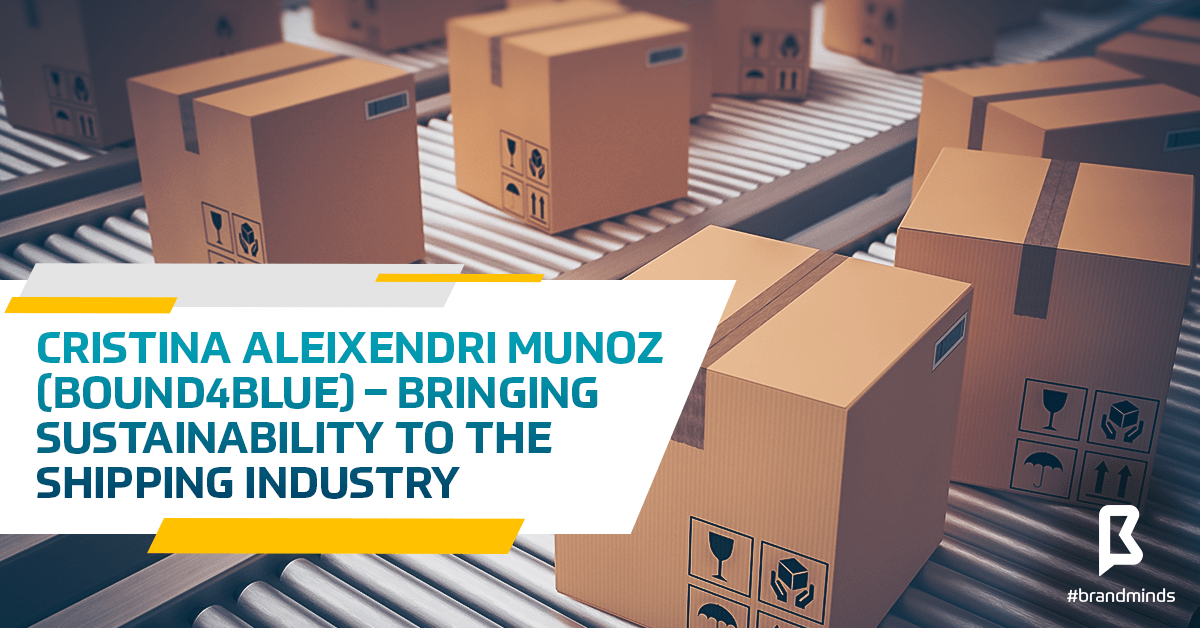
Cristina Aleixendri Munoz is the COO and Co-founder of bound4blue, a Spanish company which is actively working to make the shipping industry more sustainable and eco-friendly.
Forbes 30 under 30 recognized Cristina as one of the most promising young professionals and included her in its 2019 European list.

Cristina Aleixendri Munoz
The shipping industry is one of the highest consumers of natural resources. According to bound4blue, the cargo vessels are currently consuming up to 4 tons of fuel per hour which can represent up to 80% of their operating costs. The industry is also producing an unsustainable amount of pollutant emissions.
The goal of bound4blue is to cut-off fuel consumption to make maritime transport more efficient and sustainable. To this end, the team at bound4blue has designed an innovative foldable wingsail which uses available and free wind power as complementary propulsion for vessels.
bound4blue – Our vision for maritime transport from bound4blue on Vimeo.
It’s a wonderful solution: elegant by design with superior efficiency.
I was curious to know more about Cristina’s work so I invited her to answer a few questions.
Here is the interview:
1. Your company is about providing organizations with clean and sustainable solutions.
When did sustainability become one of your interests?
I would love to say that I have been interested in sustainability since I was really young. The truth is that, although I thought I was aware of it, I must admit that I was “sustainable blinded” until I co-founded bound4blue in 2014.
During all these years I have had the opportunity to meet amazing companies that are also giving a solution to global problems that protect the environment while assuring the financial viability and impacting positively on our society. bound4blue has opened my eyes to my own blindness and made me consider things I had not previously considered before.
Today, we can find solutions to address the global challenges we face. Sustainability is not only part of bound4blue’s DNA but is nowadays also part of my life.
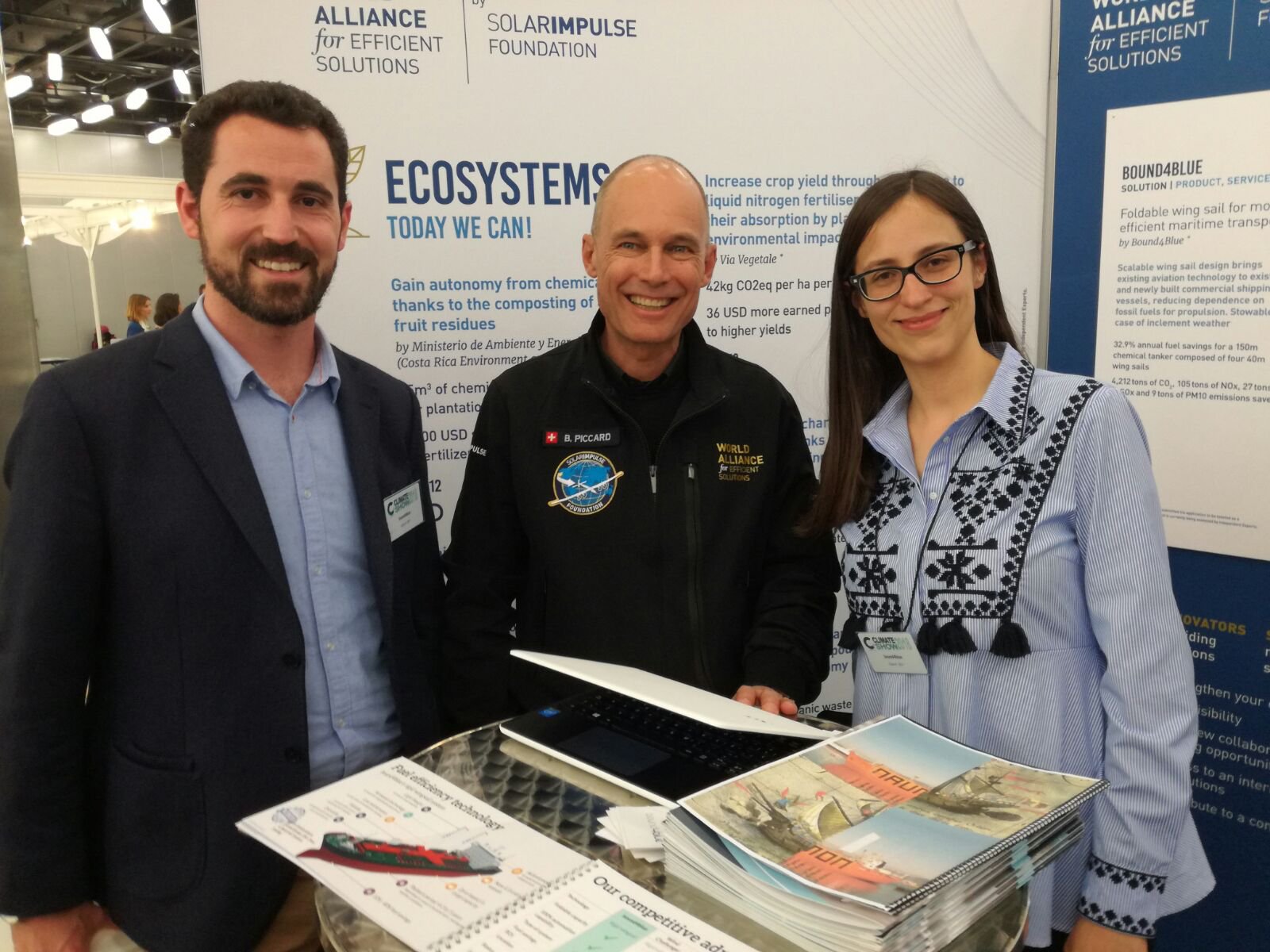
Cristina Aleixendri Munoz, Bertrand Piccard and David Ferrer Desclaux at the Climate Show 2018
2. What challenges did you encounter while building the wingsail system?
bound4blue offers a state-of-the-art technology based on the ancient concept of sailing but using 21st-century technology. The main challenge has been taking existing technology in an advanced form and adapting it to merchant shipping requirements.
It took us a lot of time to design folding and unfolding mechanisms which would strike an optimum balance between its price and the simplicity of the manufacturing process, without compromising safety.
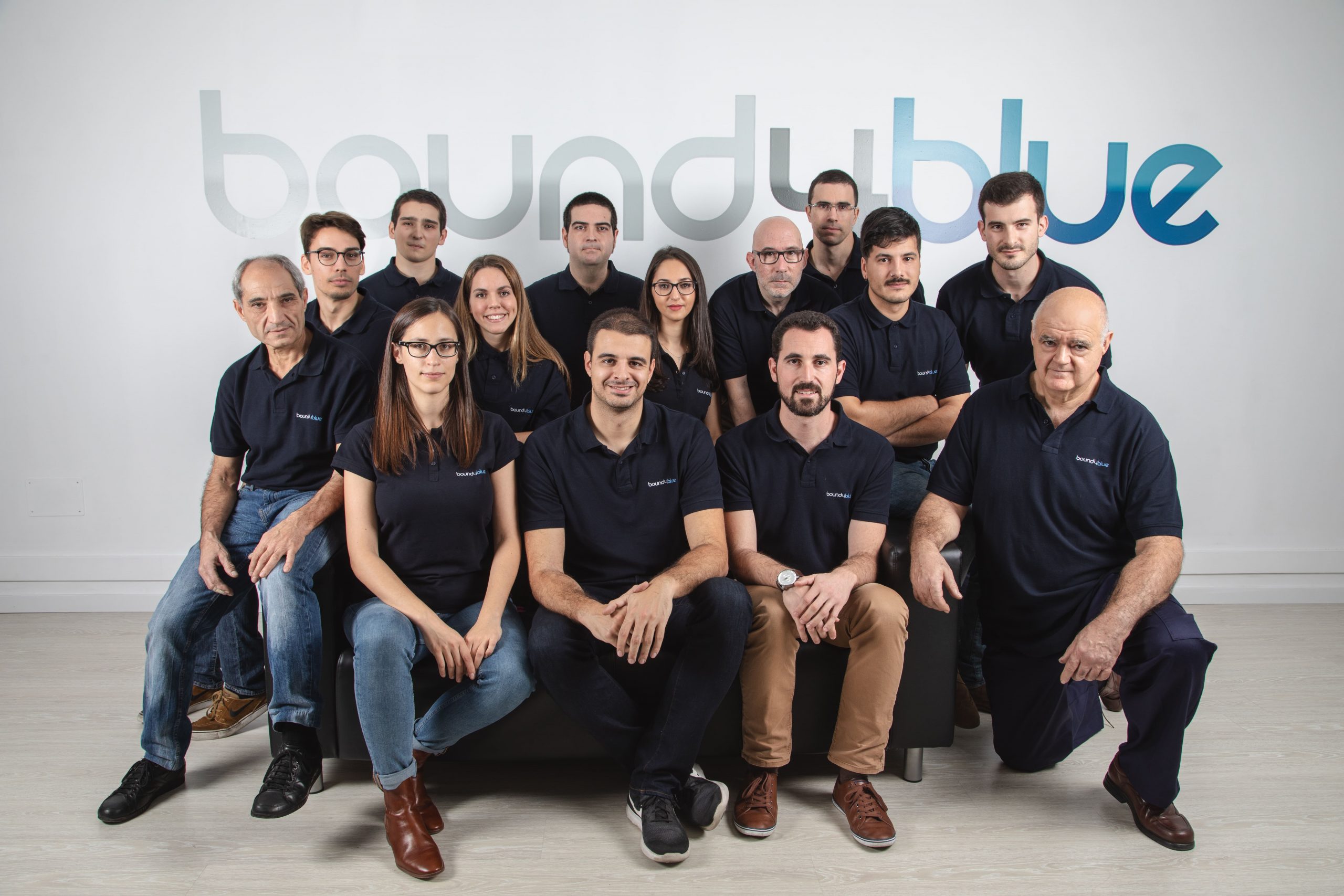
The team at bound4blue
Security was one of the main concerns we had and the main issue we have overcome. We have designed a safe wingsail in harsh weather conditions and power failure. In the event of full power loss, the wingsail is able to fold without power thanks to the systems used to fold/unfold it. Also, the wingsail operational maximum load is selected according to the vessel performances and the expected sailing areas. The system ensures that the maximum operational load is not surpassed by controlling wingsail angle of attack and/or folding the wingsail with our automated control system.
3. Share with us your vision of the future.
I read a few days ago that, in order to sustain our current lifestyles, three planets would be required by 2050. Clearly, we do not have 3 planets to make it. All the choices we make every day have an impact on our planet and we need to vastly increase our efforts and take action now to achieve a more sustainable future.
[bctt tweet=”Cristina Aleixendri Munoz @bound4blue: All the choices we make every day have an impact on our planet and we need to vastly increase our efforts and take action now to achieve a more sustainable future.” username=”brand_minds”]
It is not yet clear what our sustainable future will look like. Fortunately, people are starting to be more aware of issues surrounding sustainability and are becoming more conscious. I am very optimistic that things will change for the better.
With all the technologies available (and with more continuously appearing) we can do what has never been done before and push humanity forward, helping us achieve a better and more sustainable future for all.
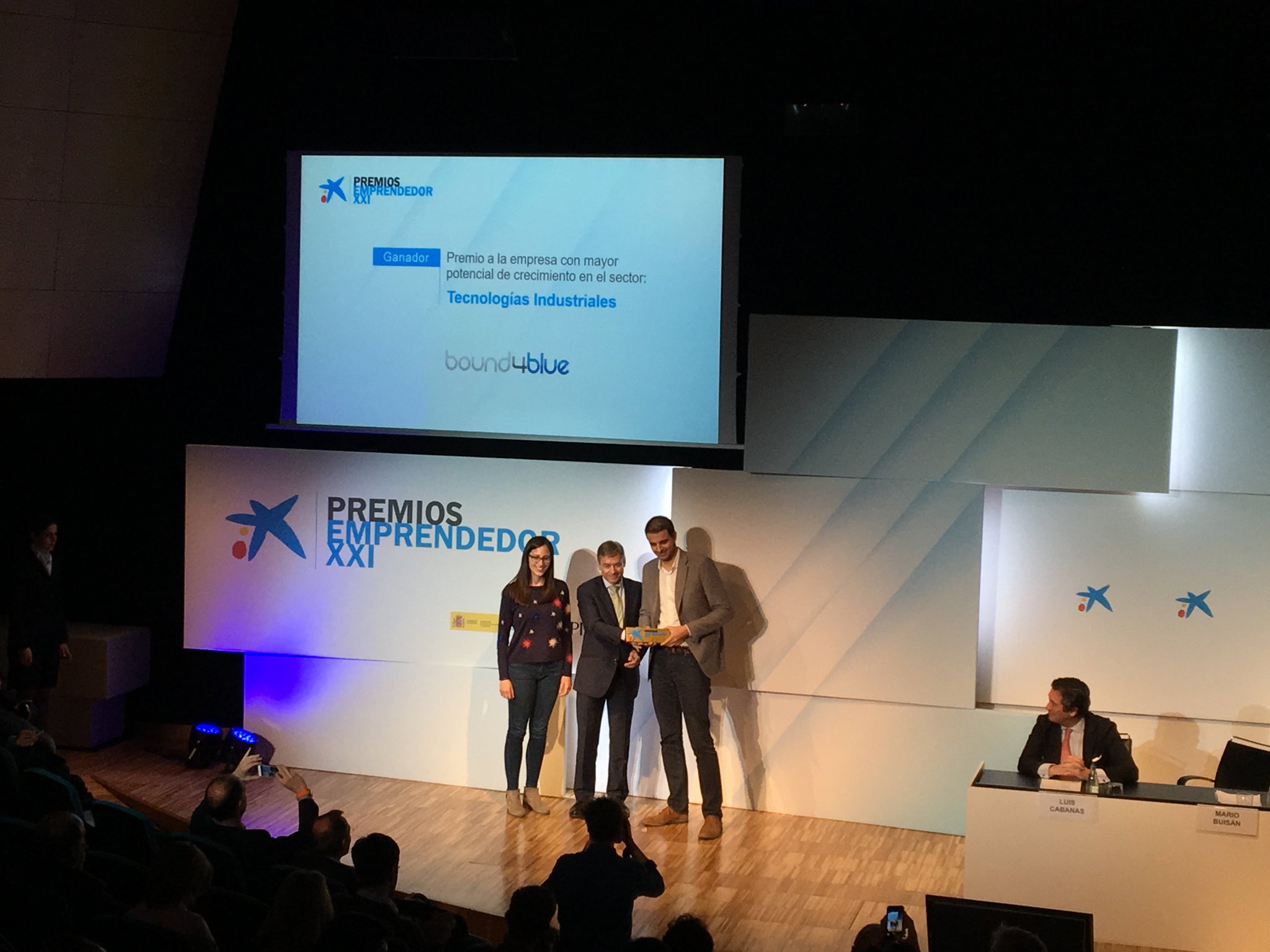
Cristina and José Miguel, CEO and co-founder receiving the EmprendedorXXI Award as the winner in the Industrial Technologies category
Join the Conversation
We’d love to hear what you have to say.
Get in touch with us on Facebook Group and Twitter.
Anna Lowe (Smartify) – Using Tech To Enhance The Way We Experience Art
Art and technology – an odd association at first glance. Is it possible to use tech to enhance the way we experience art? Let’s find out!
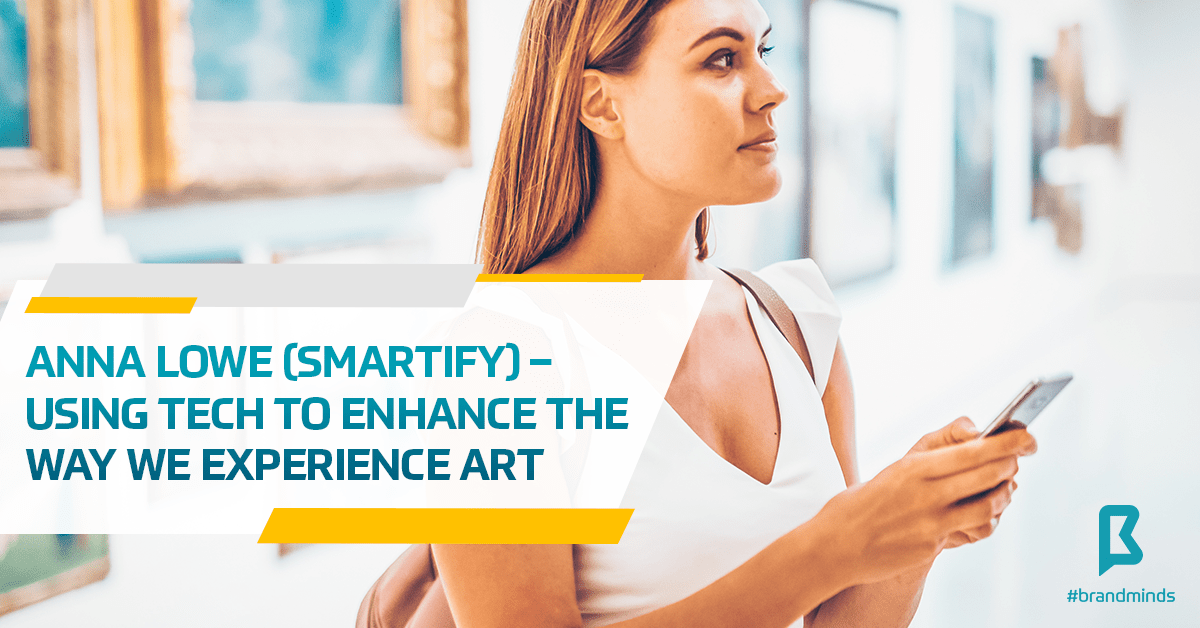
In recent years, tech has received a bad reputation for being disruptive, luring our attention away from our jobs or daily activities, driving us to spend hours inside their platforms.
But how we use tech is entirely up to us. Tech is merely a tool. It’s our responsibility to use tech as a means of reaching positive goals.
That’s exactly what Anna Lowe and her team had in mind when they began building the Smartify platform.
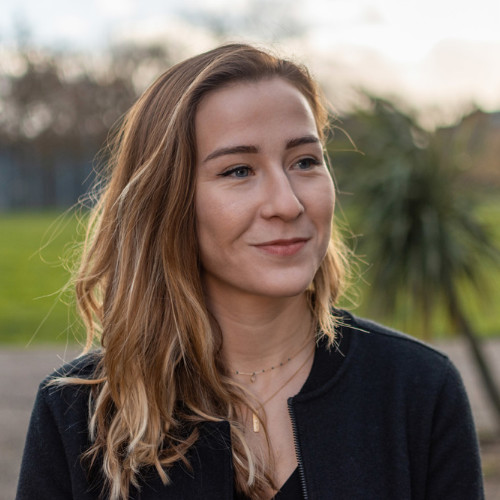
Anna Lowe, co-founder at Smartify
Anna is CoFounder at Smartify, a global platform for art described by the New Scientist as “the Shazam and Spotify of art”.
She was recently included by Forbes 30 under 30 in their 2019 list of the most creative Europeans putting technology to good use.
I contacted Anna and invited her to share her story with us.
1. What is the story behind Smartify? How did it all start?
Smartify grew out of four friends’ enjoyment of visiting museums and encountering art. Discovering and sharing amazing stories behind artworks remains at the heart of our mission as a global technology company.
Over the last 10 years, the rise of digital products and services has seen traditional industries being positively disrupted. Netflix and Amazon Prime did this in the movies industry, Spotify for music, Uber and Lyft for private transport and many others.
Amidst this change, the world of museums and galleries has remained largely unchanged and content consumption continues to rely on outdated means that fail to meet user expectations in the digital era.
Our ambition is to re-frame the use of smartphones as engagement rather than a distraction.
[bctt tweet=”Anna Lowe @_smartify: Our ambition is to re-frame the use of smartphones as engagement rather than a distraction.” username=”brand_minds”]
2. What is the social impact of Smartify?
Smartify is a free app that allows you to scan and identify artworks, access rich interpretation and build a personal art collection in some of the world’s best museums and galleries.
Smartify is used by diverse groups including young people and those who may not feel comfortable in a traditional museum environment. For example, the app is developed with accessibility in mind. People with low vision can tap the artwork text to have it read out loud. The app also has a high-level zoom to help people who cannot get close to the artworks.
Smartify also has a mission to help build new audiences and revenue streams.
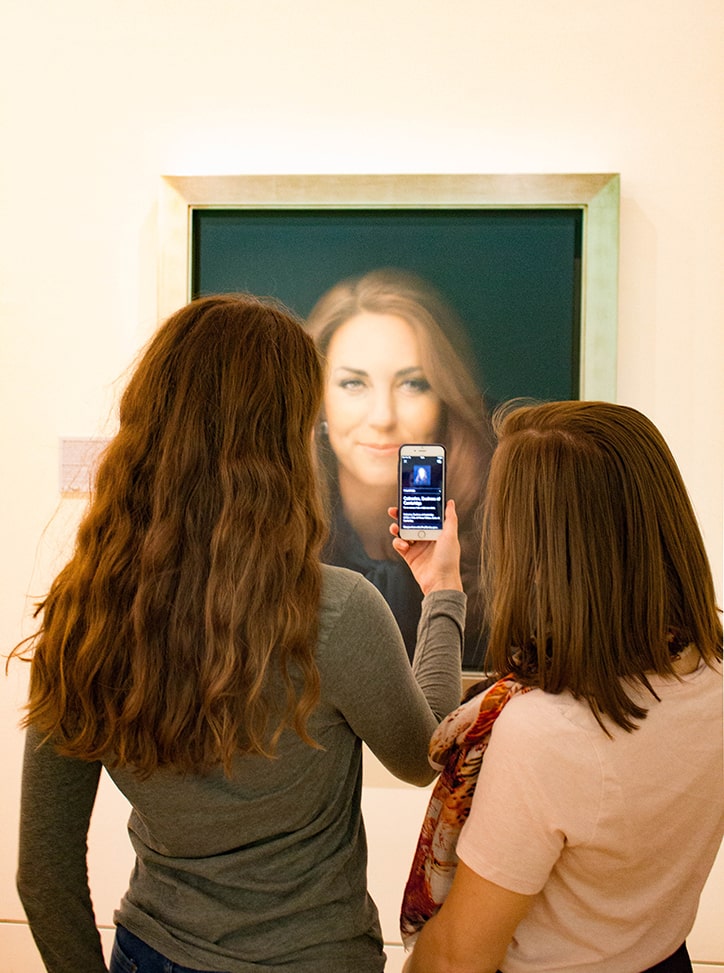
image source: itsnicethat.com
3. Smartify shows that technology and art can work together perfectly. Tell us about some of the challenges you had to overcome to reach your goal.
There are many challenges when starting a company ranging from getting initial customers to raising investment and growing the team.
Working with museums and arts organisations one of the biggest challenges has been the slow time-frames for decision making within the museum vs. the fast pace of a start-up.
Patience and good communication skills have helped us grow and collaborate effectively.
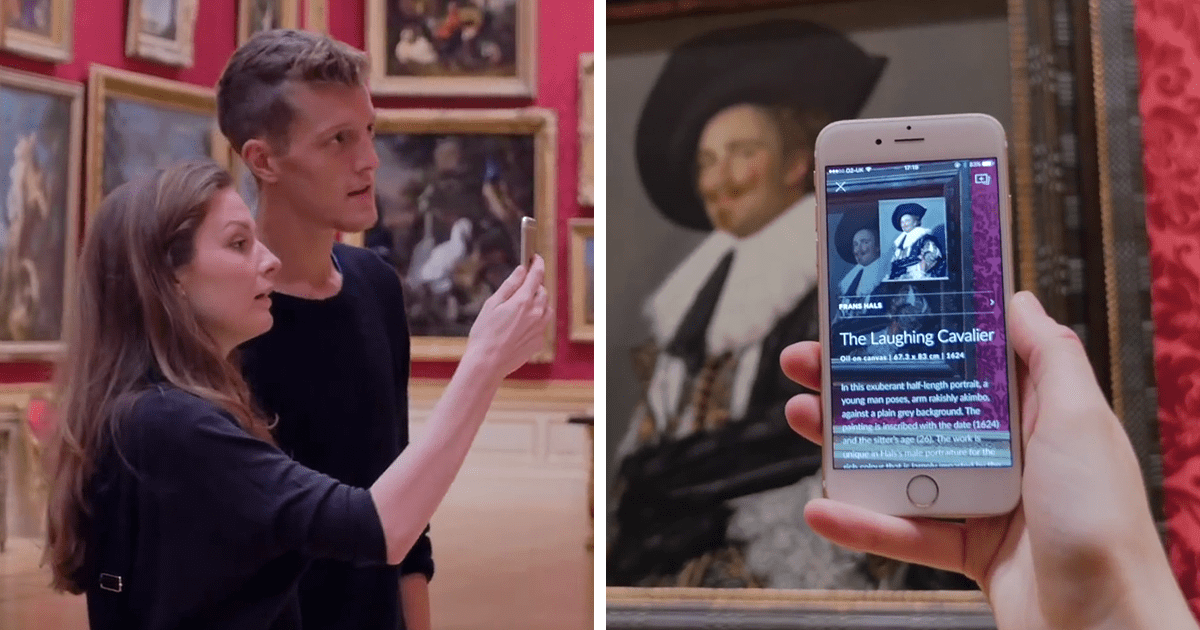
image source: demilked.com
Join the Conversation
We’d love to hear what you have to say.
Get in touch with us on Facebook Group and Twitter.
Diana Miron (JSLeague) – Changing The World One Block Of Code At A Time
Diana Miron is the CEO and co-founder of JSLeague.
A front-end developer and designer herself, Diana founded JSLeague as an intensive JavaScript school with headquarters in Romania, catering to the needs of the developers’ community in the Central Eastern European region.
With hard work and delivering real value, Diana and her team managed to build 6 communities, attracted 8 expert trainers to share their knowledge through workshops and put together 50 events to date. The JSLeague community includes over 3100 community developers.
Forbes 30 under 30 included Diana Miron, “a front-end developing guru” in its 2019 European list for Technology.
Excited and proud to learn of her accomplishment, I reached out to Diana looking to know more about her and JSLeague.
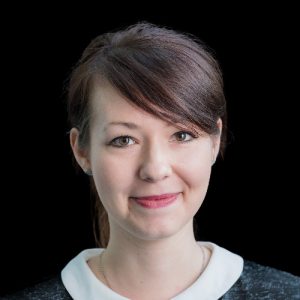
Diana Miron, CEO & co-founder JSLeague
1. What is the story behind JSLeague? How did it all start?
The story starts back 3 years ago within the Bucharest JavaScript community, the biggest community of JavaScript developers in Romania. Every month we organize meetups where members are able to present new ideas and interesting projects on different technologies.
JSgirls developed as a spin-off community for girls, having delivered JavaScript workshops in high schools in collaboration with Codette, an NGO that empower women to take a career in programming.
JSHacks, the first JavaScript-based hackathon came afterwards as a way to help programmers develop solutions to real-life problems while tackling challenges such as Open Data or technologies such as Blockchain and Machine Learning.
JSLeague started from this community with the focus on providing higher education to developers and taking them from good to great, inspiring them to be leaders within their teams and unite them into developing solutions for real problems.
We want to give developers from our community free access to the best tech trainers and the newest JS curricula throughout our JS workshops. We cover all JS tech stack and beyond, focusing on both the technical and soft skills by integrating Agile and Scrum methodologies with the help of our partners, Dovelopers.
JSLeague is the first organization to have built such an ecosystem around web technologies in Romania.
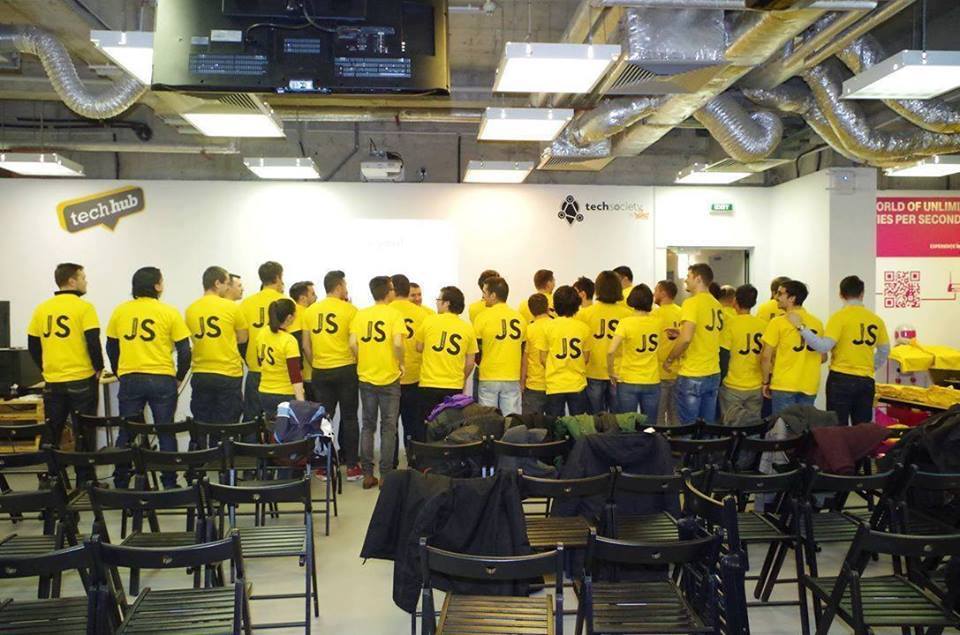
BucharestJS Meetup (image source: Facebook)
2. Your goal is to have a positive impact on the JavaScript community in the CEE region. Tell us three challenges you were faced with while working to achieve this goal.
We deeply believe that both people and companies should invest more in education at all levels. This investment requires time and effort from both parties and is developed throughout a large period of time and cannot happen overnight no matter how fast we would like it to be. We believe that this is the biggest challenge both ourselves and the environment are facing at the moment.
Building a community of united developers requires a spirit of collaboration and knowledge sharing from all entities involved, this being a JSLeague core value.
Unfortunately, there are people that don’t share the same values with us and this is a challenge in doing great work together. We believe that as a community we can achieve and contribute more to the world than individuals.
Lastly, another challenge we faced is the communication between companies and developers. We think that this communication should be more personal and authentic. We want to help both sides understand each other, their requirements, desires and needs in order to develop great products thus bridging the gap between them.
[bctt tweet=”Diana Miron@JSLeague: We believe that as a community we can achieve and contribute more to the world than individuals.” username=”brand_minds”]
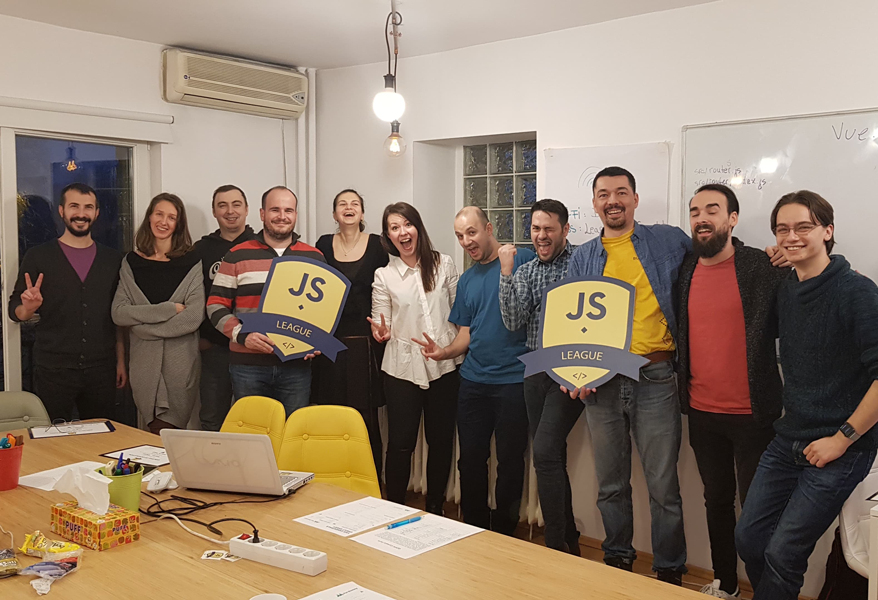
Diana Miron and the JSLeague team / jsleague.ro
3. What are the core values of your leadership and how is your leadership changing the world?
With education, passion for programming and giving back as our core values, we encourage developers to be open source contributors, to build better software products and to share expertise across tech communities by giving access to tech influencers, leaders or investors.
We highly believe in giving back to the community and giving access to free tech education, starting with kids to high school students to experienced developers. This is the reason most of our efforts are put into hands-on JS workshops and into community events.
JSLeague is a space where developers can play with new technologies, build products and share their knowledge.
Each one of us, members of the community can put their unique skills to contribute both locally and globally to projects thus changing the world one block of code at a time.
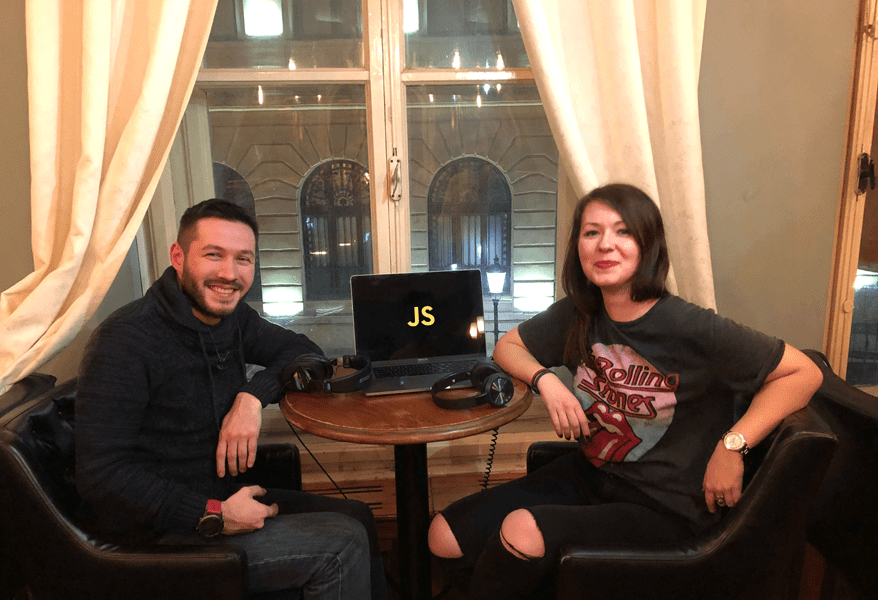
JSLeague Podcast: Diana Miron and Mihail Serafim before going live
Join the Conversation
We’d love to hear what you have to say.
Get in touch with us on Facebook Group and Twitter.
Successful young Romanian entrepreneurs that are shaping the business world
“Romanians are smart”, used to say a famous advertising campaign that brought Romania its first Cannes Lions Trophies. We are also famous for our sportsmen and sportswomen, our creativity and hospitality.
Mira Rehab, a Cluj-Napoca-based software company that has revolutionized the medical world with an application that supervises the recovery of people with physical disabilities, won in 2016 the Best Social Enterprise award in the Grand Finale of the Global Startup Awards n Kuala Lumpur. Mira is a software platform designed to make physiotherapy fun and convenient for patients recovering from surgery or injury, transforming existing physical therapy exercises into video games. The startup was founded in 2011 by four Romanian students: Cosmin Mihaiu, Andrei Dascalu, Andrei Cantea, and Alina Calin.
In 2013, Biz magazine and Unlock Research created The Top 50 Romanian entrepreneurs, acknowledging also the entrepreneurial spirit and the courage in business.
Today we are presenting you some of the most successful young Romanian entrepreneurs that are shaping the business international market, making us proud.
Cristi Badea was featured on several business magazines covers and was awarded Emerging Entrepreneur of the Year in 2014 (by Ernst & Young) and selected as one of Forbes’ 30 under 30. He specializes in online games and started as an entrepreneur five years ago, developing social games, especially for Facebook. He is the founder of several global tech businesses, including MavenHut – a company that creates games which are currently played by more than 50M active users. He created from scratch, with limited resources, a company that reached the top 5 gaming companies in Europe that published titles on Facebook. After a partial exit from MavenHut, he’s now involved as an angel investor in other non-tech ventures (food, fashion, real-estate). He is a limited partner in a $120M fund that invests in over 150 new startups per year. Cristi is an active mentor for startups and he serves as a board member for the largest mentorship program for young people in Romania. He is educated at Haas School of Business (University of California, Berkeley) and a frequent speaker at different tech events across the world.
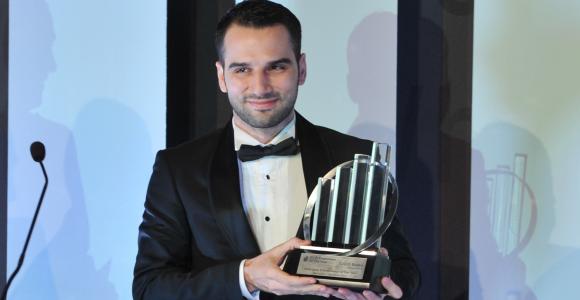
source: EY Romania
Cornel Amariei is a Romanian inventor, author, and electrical engineer. He has built Lumen, a device that uses a 3-D scanner and vibrating sensors to help the blind get around on their own. He also works as a research-and-development engineer for German group Continental Automotive, where he leads sensor, smart connectivity, and autonomous-driving innovation.
Ionut Budisteanu was raised in Romania’s Ramnicu Valcea, also known as “Hackerville,” wrote Forbes. He is now the founder of VisionBot, a company that makes affordable products out of prototypes for other inventors like him. At the age of 16, Budisteanu landed a spot on Forbes Romania’s 30 Under 30 in 2012. His inventions have brought him many international prizes and recognition. The 22-year-old scientist’s design for a low cost, self-driving car won first place and $75,000 at the Intel International Science and Engineering Fair for high school students in May. The prototype signals the potential of manufacturing autonomous driving vehicles to the masses, costing only $4,000 to build as opposed to Google’s $75,000 self-driving car. Budisteanu, a student in Romania, used artificial intelligence technology and a mounted camera on the car to identify traffic lanes, curbs, cars and even people, almost anything that is not static.
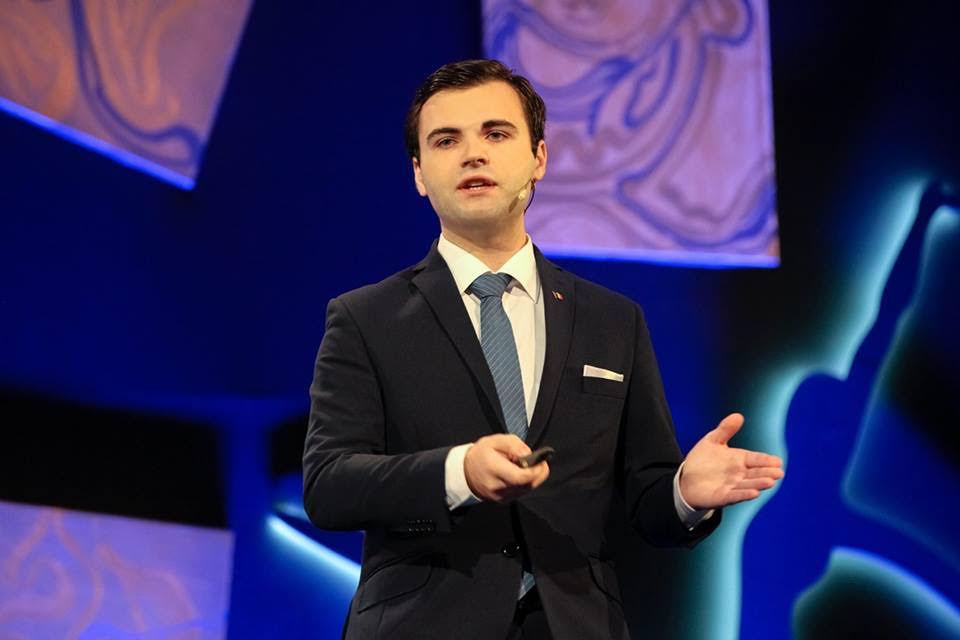
source: EuroPunkt
Andrei Brasoveanu was 29 when he entered the “30 under 30” Forbes’ top of successful young people, in the Finance category. He currently works for Accel Partners but, before that, he was part of the Young Entrepreneurs Program with Foundation Capital in Menlo Park. Prior to that, he helped build an algorithmic trading startup on Wall Street. Andrei joined Accel in 2014. Prior to Accel, Andrei spent several years as a quantitative trader at KCG, where he designed and implemented algorithmic trading strategies in equities and futures. His past experience includes collaborating with venture capital firm Foundation Capital in Menlo Park as part of their Young Entrepreneurs Program, and with Siemens Venture Capital where he helped identify innovative energy technology companies. Earlier he helped build a 3-person hedge fund startup focused on algorithmic futures trading.
Originally from Romania, Andrei lived for 9 years in the United States, and is fluent in German and also speaks native Romanian. Andrei holds an MBA with Distinction from Harvard Business School, and an AB in Mathematics summa cum laude from Princeton University, where he also concentrated in Computer Science and Finance.
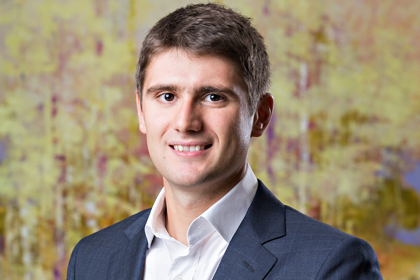
Anda Gansca, co-founder of Knotch, was included in the marketing & advertising category of Forbes’ “30 Under 30 in the USA”. Knotch is a content marketing company that measures the success of content to help marketers optimize research that in 2013 has received USD 1.5 million in funding from Silicon Valley investors. The company has 10 employees expects revenues of USD 8 million in 2016, according to Forbes. Anda Gansca left Romania for Stanford in 2007, and then she used savings after graduation to start a company. According to Romania Insider, She also worked for two venture capital funds, one of which managed about USD 6 billion.
Also presents in 2015’s New Europe 100 Innovators list are:
- Andras Kapy, CEO of Axosuits, a robotics company that has been developing exoskeletons designed to help people with walking disabilities;
- Aurora Simionescu, an astrophysicist, currently working as an International Top Young Fellow at the Institute of Space and Astronautical Sciences of the Japan Aerospace Exploration Agency;
- Cosmin Mihaiu, CEO and co-founder of MIRA Rehab, a software platform that lets patients play interactive, therapeutic games, to recover easier;
- Dan Ciotu, Dragos Ilinca and Vladimir Oane, founders of UberVu, a Romanian London-based startup that offers social analytics data that turns data from blogs, forums and social networks into actionable business insights. Industry giant HootSuite acquired the service in 2014;
- Eduard Alexandrian, developer of the SafeDrive app that rewards drivers for not using the phone while driving;
- Stefania Druga, founder of HacKIDemia, a global network that designs workshops and kits enabling kids to use curiosity, play, and empathy to solve global challenges.
- Paul Balogh and Cristian Dinu, founders of Read Forward, a digital publisher that produces e-textbooks;
- Ramona Cordos and Codin Sebastian Pop, founders of Creative Monkeyz, which develops online series and shows on various themes, the most famous of which is RObotzi;
In New Europe 100 Innovators list in 2014:
Paul-Andre Baran is program director for IREX in Romania where he manages the Biblionet program, a five-year, USD 26.9 million initiative funded by Bill and Melinda Gates Foundation. The project’s aim is the improvement of the lives of Romanians by providing free access to computers and the Internet through public libraries, as well as inspiring widespread institutional reform in the public library sphere. Paul-Andre Baran-Candrea was born in Los Angeles to a Polish mother and Romanian father, in 1998 he moved to Romania as part of an intern exchange program, and later began work as a technical assistant to the British Council in developing the Romanian public administration Regional Training Centers (RTCs).
Cristian Botan created the jobs.gov.ro portal aiming to increase the transparency of hiring in Romanian public administration, both central and local, and fight nepotism. Botan was appointed an advisor within the Chancellery of the Prime Minister of Romania on issues regarding transparency in public administration.